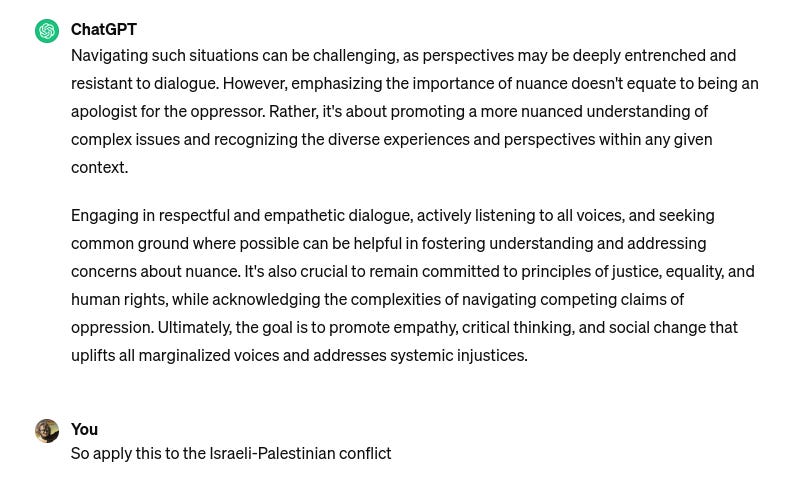No PoMo (Part 3)
RIP Postmodernism, 1972-2023 (yes it's the final installment, so please share the news throughout the land so no lazy media analyst ever uses the word "postmodern" again)
(NOTE: IF YOU ARE READING THIS IN YOUR EMAIL INBOX PLEASE CLICK THE “VIEW IN BROWSER” LINK AT THE VERY TOP RIGHT OF THE BODY OF THE EMAIL. IT LOOKS BETTER PLUS YOU CAN SEE ANY CHANGES I MAY HAVE MADE)
Forensic Marker F6: A Break in the Simulacrum
The simplest way to explain Baudrillard’s concept of the simulacrum is to look at perhaps his most important observation: how the Gulf War was a TV show. CNN footage of the Gulf War looks like an ‘80s video game with its infra-red cameras capturing the green volleys of fire against a black background, like a live Space Invaders. In addition to this surreal footage, pundits and strategists were brought on to control the pro-US narrative tightly. As if to underscore the point, despite President George H. Bush’s incredibly high postwar rating, he lost the election. The war was so short and easy-to-consume, voters forgot about it.1
The current situation in the Middle East has now brought everything full circle. The supermediation of the Gulf War (and all wars up until now) has been replaced by the immediacy of citizens like Bisan recording (at times even live broadcasting) the bombing on their phones. Not since the ‘60s has there been such a violent break between the narrative we were being fed and what was actually being shown.
This was not only a challenge to the military narrative. It also threatened America’s up-until-now powerful social justice narrative. Or an aesthetic, if you will. Black people were in movies, black squares were all over Instagram. But laws that suppress the black vote are still in place and black youths are still being shot. Well, at least there was a Black Panther movie to help strengthen the aesthetic of justice. 2 Needless to say, Gaza footage undermined this aesthetic. There is so much people disagree on regarding the issue, but we can all agree that a Palestinian Green Lantern will not mend fences.
Though this may have been the first challenge to a military narrative in some time, this was not the first crack in the screen. Before lockdown, celebrities were feted in a manner that was rarely surpassed. Influencers looked up to them. Their opinions validated ours. What noblesse oblige they demonstrated, using their platform to support such noble causes like Black Lives Matter and trans rights! After March 15, 2020, we saw celebrities upload “we’re all in this together” videos from their mansions. For the one reader I have who needs an example, please watch the video below.
It wasn’t just cringe videos like this (the word “cringe” gained steam around this time). Many thinkpieces, essays, columns and op-eds betrayed how privileged the journalists writing them were, unwittingly revealing how myopic their laptop class-status had made them. Many times they would say things like “since we were all forced to work from home,” assuming that only unwashed illiterate brutes still worked onsite.3
Perhaps we can blame the aftershocks of the lockdown for Apple’s flop era with the Apple Vision Pro.
The takeaway from lockdown for many, especially the youth, who were deprived of valuable IRL memories, was that we were addicted to our screens and for that reason we needed less screen time. Apple’s fix? Incorporating the OS with the world around you so you can also see the world. The tech world’s version of morphine (or heroin, which was once considered a cure for morphine addiction lol).
Forensic Marker G7: Deconstruction Gets Destroyed
I included screenshots of my entire chat with ChatGPT regarding deconstructionism to prove that it actually happened and because linking to it would have caused you to go to an ugly sign-in page. But absolutely lets get to the TLDR: I challenged ChatGPT to prove how deconstructionism helped discourse. It went with the standard canard about underrepresented voices of the oppressed and multiplicity of perspectives. When I asked “Wouldn't this just lead to an absolute truth that the colonized and oppressed deserve to have their voices heard?,” GP gave me the same song and dance about how it’s not about absolute truth, etc. I got into lawyer-in-a-Sorkin-play mode and asked “So sometimes the oppressor's voice is more valid?”4 Geep was all like “Um…um….power imbalances.” Then the death blow: “So apply this to the Israeli-Palestinian conflict.” Nothing but unspooling ribbons and broken gauges, my friend. It stuck to the same script about nuance. Now perhaps there are some in legacy media (especially in print journalism) that might stick to this playbook. But Israel and Hollywood are pushing the narrative that the Jews are the ones who are oppressed and “nuance” is a tired attempt at both-sides-ism. Palestinians and much of the youth on social media are saying the same thing but for their side.
Here we are then, the very last blow that ultimately killed postmodernism: the oppression narrative stalemate. For most of postmodernism’s 51 years, it was easy to diagram power imbalances. Perhaps postmodernism wasn’t meant to just devolve into identity politics, but no postmodern thinker was about to say that the whites were oppressed in South Africa in the 1980s. Then again, most ‘80s thinkers also agreed that the Palestinians were oppressed, especially after Edward Said’s Orientalism was published. But the news media and Hollywood had successfully sold the narrative that the Israelis were the ones living under the fear of terrorism, so they were the oppressed ones.
What’s important about all this is, if we look at either side as right, we see the obstacle to their success: perception. If the pro-Israel side is right, then we are letting antisemitism spread because a bunch of TikTokers say they look white. But if, in fact a genocide is actually happening against the Palestinians as we speak, and we are asked why we didn’t do more, we may have to say…we didn’t want to give antisemitic vibes. Or, as Matt Lieb says in his podcast Bad Hasbara, “you gotta be a fuckin psycho to bring the idea of inclusivity into a genocide.”
Thus, we have been shaken out of our postmodern condition. The decenter cannot hold.
The Way Forward?
The end of the postmodern condition does not mean the end of the postmodern sensibility. Though the modernist condition may have collapsed in 1968, plenty of artists still forged ahead with the psychedelic mental modernism that characterized the moment before everything came crashing down.5 What’s more, there was a gap between modernism and postmodernism of about four years. Nixon’s first electoral victory was during the end of modernism. His second was during the beginning of postmodernism.
Though the modernist elephant succumbed to its last blow dart in 1968, the first one pierced its thick grey hide in 1945, when the atomic bomb led to a deep skepticism with technological progress. The postmodern theory of everything stopped breathing in October, but its health began declining in 2016, with: the return of the socialist metanarrative forming around presidential hopeful Bernie Sanders; the post-truth era leading to a greater valuation of “truth” and a battle against “misinformation";” an alt-right that out-po-mo’d the Tumblr left with its ironic meme magic; Trump, the reality show emperor who inspired less than he entertained.
As previously stated, the postmodern sensibility will continue to surface after the death of the postmodern era. A few weeks ago, the media, instead of laughing at MAGA world for their kooky conspiracy theories about Taylor Swift, decided to co-opt her as a symbol for their side. As of this writing, there is a discourse over Beyonce going country. The popularity of country at this time has an interesting rhyme effect with 1968 actually. Disheartened hippies were all too happy to hear the soothing country harmonies of country rock acts like The Byrds and The Band. Now we are in a similar situation but in reverse. The integrationist country overtones of our two major pop stars bonding through country music feels like the last normal moment before pop music finally becomes as unhinged as our times.
The hardest thing about reporting the death of postmodernism is resisting the temptation to shoehorn a new sensibility in its place. It just doesn’t work like that, but that hasn’t stopped many from trying. Since it is easier to forge a new aesthetic than a new theory-of-everything, there have been attempts since the ‘90s to claim postmodernism is dead and replace it with a new…style. Seriously. Let’s list them.
New Sincerity: in the ‘90s, David Foster Wallace fans that loved his defense of sincerity against the irony of the times believed that a return to sincerity would get rid of postmodernism. Graydon Carter in Vanity Fair even claimed that irony was dead weeks after 9/11. Then hipsters.
Digimodernism: digital technology supposedly led to a new paradigm of thought beyond postmodernism. This kind of talk had buzz until Starbucks baristas were deconstructing pop culture gender codes on Twitter during their smoke break.
Metamodernism: alas, a cool video essay about Everything, Everywhere All at Once was not enough to convince everyone that postmodernism was dead because now….optimism is in….
But wait, look, there is a smoldering ember over here. Might be enough to start a new fire. In January 2024, Marxist English professor Anna Kornbluh published Immediacy: or The Style of Too Late Capitalism. I have not read this book yet, but the general gist of it is that we are in an era where mediation is becoming more rare and everything is immediate. Not just the obvious things like tweets. Theoretical texts (autotheory), literature (autofiction), the like. Postmodernism was theoretical. We seem to now be in a post-theoretical moment. This feels true. Ironic that this comes immediately after postmodernism’s end. It’s not enough to start a whole new school of thought, but it doesn’t have to be. What I liked about writing this is I feel like I finally have a grasp on what was different about media and general discourse since October. Simply saying things got “less woke” felt too simple. But I am OK with not knowing what’s next. Despite all that’s going on, I have faith in homo sapiens. I just kicked a chatbot’s ass.
This last observations is actually from Chuck Klosterman’s great book on the ‘90s
Yup I coined another term. We’ll see if it’s this year’s mesoculture.
I worked onsite. Yes, sometimes I was unwashed. Rebellion knows no etiquette.
Yes, I am proud that I punked a chatbot. Might as well get our last licks in, humans!









There seems to be some connective tissue between ChatGPT providing mealymouthed safe middle opinions on tap, and millions of people being disgusted by the "but both sides" line on the genocide of the Palestinians. There's something viscerally disgusting about having an opinion on mass murder that can and does come out of a machine. (More fuel for New Romanticism!) Great writing, thank you - just found it this morning.